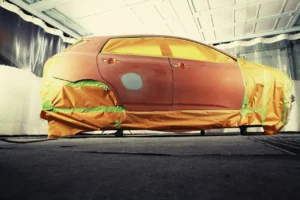There’s nothing quite as unsettling as hearing strange noises coming from your car, especially when you’re putting it in reverse. Whether it’s a grinding, whining, clunking, or squealing sound, these noises can be alarming and leave you wondering what’s going on under the hood—or more accurately, beneath the car.
While some sounds might be harmless, others could indicate a serious issue that needs immediate attention.
In this guide, we’ll explore the most common reasons why your car makes noise in reverse. From transmission troubles and worn-out brakes to exhaust system issues and loose components, we’ll cover everything you need to know to diagnose and address the problem.
By the end of this article, you’ll have a clear understanding of what might be causing the noise and how to fix it. Whether you’re a DIY enthusiast or prefer to leave it to the professionals, this guide will help you tackle the issue with confidence. Let’s dive in!
Step 1: Identify the Type of Noise
The first step in diagnosing the problem is to identify the type of noise your car is making. Different sounds can point to different issues, so pay close attention to the following:
- Grinding Noise: Often indicates a problem with the transmission or clutch.
- Whining or Humming: Could be related to the differential, wheel bearings, or transmission fluid.
- Clunking or Thudding: May suggest loose or worn suspension components.
- Squealing or Screeching: Typically associated with brake issues or a worn serpentine belt.
- Rattling: Could be caused by loose exhaust components or heat shields.
Understanding the type of noise will help you narrow down the potential causes.
Step 2: Check the Transmission
The transmission is one of the most common culprits when it comes to noise in reverse. Here’s what to look for:
- Low or Dirty Transmission Fluid
Low or contaminated transmission fluid can cause grinding or whining noises. Check the fluid level and condition using the dipstick. If it’s low, top it up. If it’s dirty or smells burnt, it’s time for a fluid change. - Worn Transmission Components
Over time, internal transmission components like gears and bearings can wear out, leading to noise. If you suspect this is the issue, it’s best to consult a professional for a thorough inspection. - Transmission Mounts
Worn or broken transmission mounts can cause clunking or thudding noises. Inspect the mounts for cracks or damage and replace them if necessary.
Step 3: Inspect the Brakes
Brake-related issues are another common cause of noise in reverse. Here’s how to check your brakes:
- Worn Brake Pads
Squealing or screeching noises often indicate worn brake pads. Remove the wheels and inspect the pads. If they’re thin or uneven, replace them. - Rusty or Dirty Brake Rotors
If your car has been sitting for a while, the brake rotors may have developed a layer of rust or debris. This can cause grinding noises when you first start driving. Cleaning or resurfacing the rotors can often resolve the issue. - Loose Brake Components
Loose calipers, shims, or other brake components can cause rattling or clunking noises. Inspect the brake system for loose parts and tighten or replace them as needed.
Step 4: Examine the Exhaust System
A noisy exhaust system can also be the source of the problem. Here’s what to check:
- Loose or Damaged Exhaust Components
Inspect the exhaust system for loose or damaged parts, such as the muffler, catalytic converter, or heat shields. Tighten or replace any components that are causing noise. - Exhaust Leaks
A leaking exhaust can cause a variety of noises, including rattling or hissing. Check for leaks at the joints and seams, and repair them using exhaust sealant or by replacing the affected section.
Step 5: Look at the Suspension System
Worn or loose suspension components can cause clunking or thudding noises when reversing. Here’s what to inspect:
- Shocks and Struts
Worn shocks or struts can cause noise and affect your car’s handling. Inspect them for leaks, cracks, or other signs of wear and replace them if necessary. - Bushings and Joints
Worn or damaged bushings and joints can cause clunking noises. Inspect the control arms, sway bar links, and other suspension components for wear and replace any damaged parts.
Step 6: Check the Differential
The differential is responsible for transferring power to the wheels, and issues with it can cause whining or humming noises. Here’s what to do:
- Inspect the Differential Fluid
Low or dirty differential fluid can cause noise. Check the fluid level and condition, and top up or change it if needed. - Worn Differential Components
Worn gears or bearings inside the differential can cause noise. If you suspect this is the issue, it’s best to consult a professional for a thorough inspection and repair.
Step 7: Investigate the Wheel Bearings
Wheel bearings allow the wheels to rotate smoothly, and worn bearings can cause humming or grinding noises. Here’s how to check them:
- Lift the Car
Use a jack to lift the car and secure it on jack stands. - Check for Play
Grab the wheel at the top and bottom and try to wiggle it. If there’s play, the wheel bearings may be worn and need replacement. - Listen for Noise
Spin the wheel and listen for humming or grinding noises. If you hear any, the bearings likely need to be replaced.
Step 8: When to Call a Professional
If you’ve gone through all these steps and the noise persists, it’s time to call a mechanic. Some issues, like internal transmission or differential problems, require specialized tools and expertise to diagnose and repair.
Conclusion
Hearing strange noises when you put your car in reverse can be unsettling, but it’s often a sign of a specific issue that can be diagnosed and fixed. By following this guide, you can identify the most likely causes of the noise and take steps to address them.
Whether it’s a transmission problem, worn brakes, or a loose exhaust component, understanding what’s going on will help you tackle the issue with confidence. Remember, regular maintenance and attention to warning signs can go a long way in keeping your car running smoothly and quietly. If all else fails, don’t hesitate to seek professional help.




